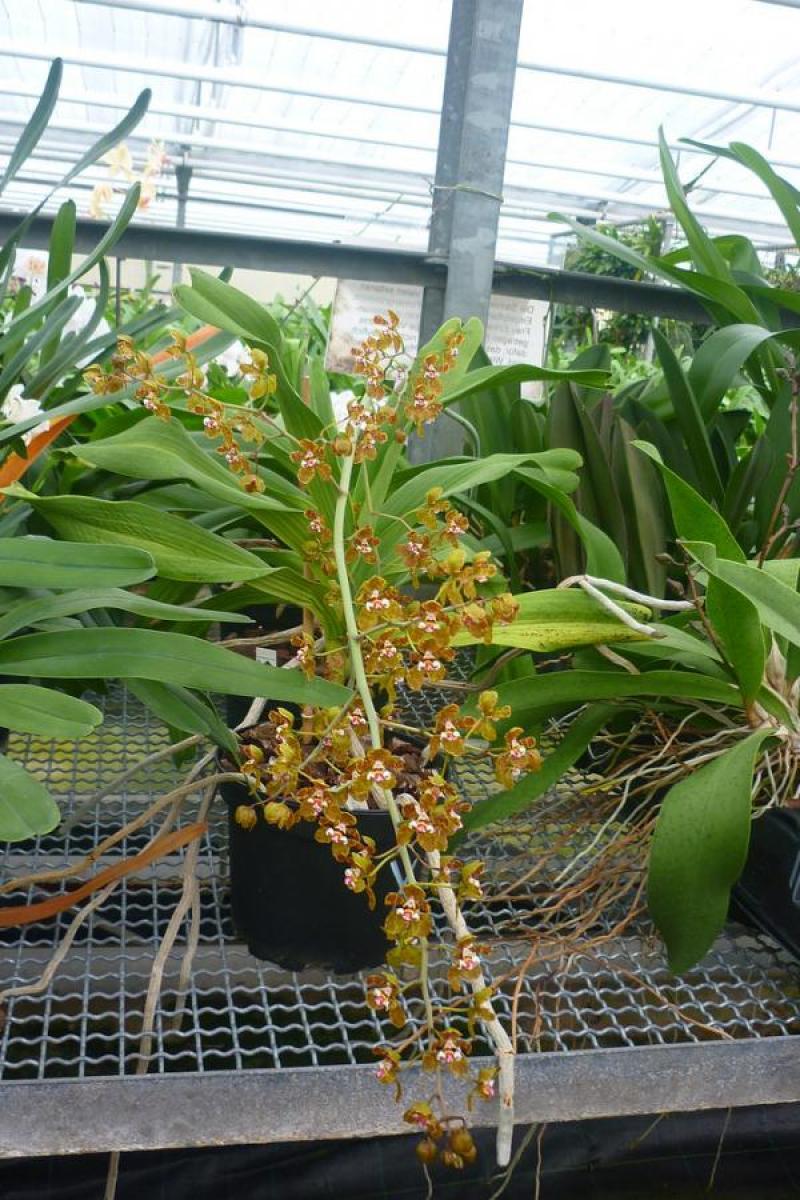Oncidium microchilum
Also known as: The Small in the subfamily: Epidendroideae
Native to: Chiapas - Mexico Departamento de Huehuetenango - Guatemala El Salvador
General Information
The Small is a medium sized sympodial cool to warm growing epiphytic or lithophytic orchid belonging to the sub family Epidendroideae native to Mexico, Guatemala and El Salvador.
Plant Description
Sympodial. Grows to 15-28cm. Each new growth has a single leathery thick, elliptic leaf that grows to 3-25cm long. Pseudobulbs grow to 1.5-10cm
Flowers
Numerous long lasting blossoms appear
Substrate(s)
- Charcoal
- Spaghnum Moss
- Perlite
- Sand
Care Notes
These orchids have a fine root system that can quickly die back if left dry for too long, but also does not like to be kept wet, so water regularly but ensure that the mix is dry before watering.
Climate
The orchids are well adapted for hot weather, accompanied by sporadic, unpredictable rainfall and a generally dry climate. They can tolerate a lot of neglect as they are quite used to it, however they can be prone to underwatering and may collapse in cold, wet weather.
For this reason it's best to dedicate a sheltered, protected area for them where the watering can be controlled, such as a corner of a greenhouse or in a sheltered balcony. They can also do well hung near the roof of a shadehouse or sheltered greenhouse where they receive the extra heat but not as much water as other plants.
Grows at low to high elevations. Rainfall ranges from 3mm to 130mm per day, heaviest in June and lightest in January. Temperature ranges from 8C to 24C, highest in April (14C to 24C) and lowest in January (8C to 19C).Watering
These orchids are sensitive to excessive watering and should only be watered when they look thirsty. Water infrequently and ensure that the roots are dry before watering. Keep an eye on them especially during hot weather as overwatering can lead to rot, whereas underwatering may result in wilting or shriveling, which while unattractive, will not kill the plant.
Fertiliser
Apply liquid based fertiliser per recommended directions. They can benefit from a high phosphate fertiliser leading up to flowering season, followed by a high nitrogen fertiliser when new growth appears, and a balanced fertiliser in other times. These orchids can also tolerate slow release fertiliser applied 1-2 pellets per cup (250ml) of media.
Apply fertiliser regularly at half strength year round. Use a high Nitrogen fertiliser during Spring and Summer. Use a high Phosphorous fertiliser during Summer.Potting
These plants are quite forgiving and will do well repotted ever 2-3 years. The mix should be coarse, well draining, and allow space for air to move and for roots to grow.
Alternatively, these plants will also do well mounted to tree fern or cork slabs, or mounted to trees.
Best time for repotting or mounting the orchids is the end of winter when new growths start to appear. Avoid repotting during hot weather,
Use water retentive media such as moss to prevent roots from drying out quickly This plant does well mounted. Repotting is best done annually.

